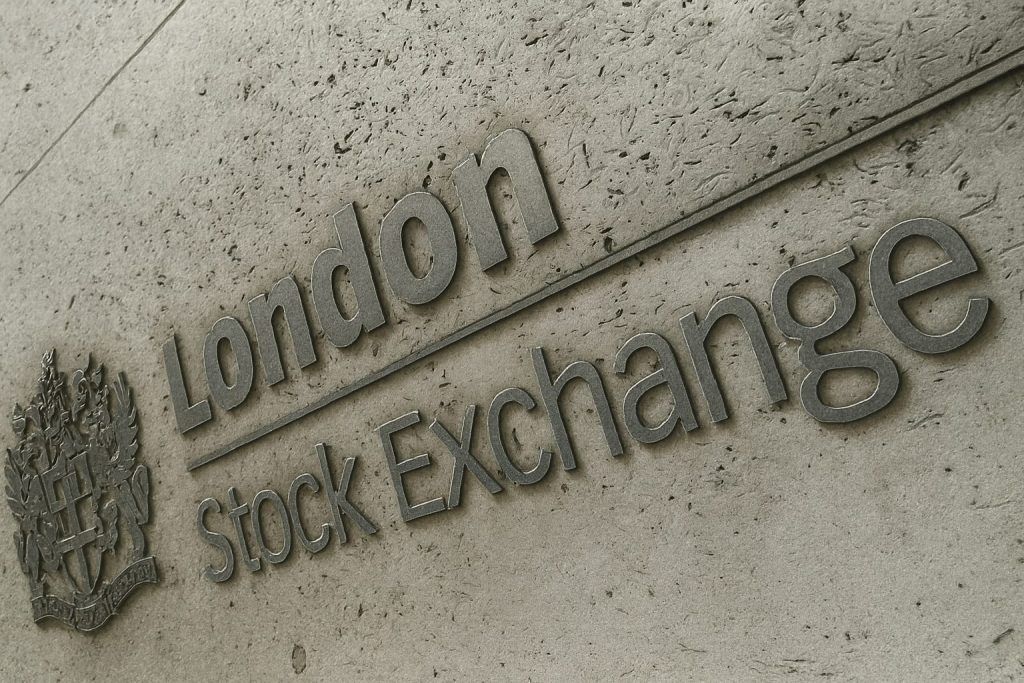TOKYO – Japan’s stock market fell sharply on Friday, November 14, 2025, as a global tech rout and growing doubts over U.S. interest-rate cuts triggered broad profit‑taking in high‑flying artificial intelligence (AI) and semiconductor names.
The Nikkei 225 closed around 1.8% lower at 50,376.53, losing roughly 905 points from the previous session, while the Topix index slipped about 0.7% to 3,359.81. Multiple market reports from Tokyo and global wire services confirmed the scale of the decline. [1]
At one point in early trade, the sell‑off was even more dramatic: the Nikkei briefly dropped more than 1,000 points to an intraday low near 50,271, almost 2% below Thursday’s close, before trimming some losses into the afternoon. [2]
Japan Stock Market Today: How the Nikkei 225 and Topix Closed
Friday’s session snapped a two‑day rebound and underscored how fragile sentiment has become near the Nikkei’s lofty 50,000 level:
- Nikkei 225: down about 1.8% to 50,376.53
- Topix: down about 0.7% to 3,359.81 [3]
The scale of the fall was closely tied to overnight moves on Wall Street. A hawkish tone from several Federal Reserve officials dampened hopes of a December rate cut, sparking a global equity sell‑off led by expensive megacap tech and AI stocks. Japanese shares followed suit, with Reuters noting that Japan’s benchmark index slid around 1.8% in line with a broader global decline. [4]
Regionally, Asian shares across China, Hong Kong and South Korea also fell, as investors questioned whether AI‑related valuations had run too far, too fast. [5]
AI and Chip Stocks Drag the Japan Stock Market Lower
The Japan stock market today was dominated by one story: a sharp correction in AI and chip‑related names that have powered much of this year’s rally.
According to multiple reports, SoftBank Group, Advantest and Tokyo Electron were among the heaviest drags on the Nikkei 225:
- SoftBank Group shares slid around 6–7%, extending sharp losses seen in recent sessions after the company exited its stake in U.S. chip giant Nvidia and as investors reassessed exposure to richly valued AI plays. [6]
- Advantest, a key supplier of semiconductor test equipment, fell roughly 5–6%.
- Tokyo Electron, a major chip‑making tool producer, dropped about 6%. [7]
Stocks linked to data‑center expansion, another popular AI theme, also came under pressure. Hitachi and Fujikura lost about 5% and 6%, respectively, as traders rotated out of the most crowded AI trades. [8]
Strategists quoted in Tokyo said Friday’s moves were classic profit‑taking in sectors that had seen outsized gains this year, rather than the start of a wholesale exodus from Japanese equities. Still, the fact that the Nikkei briefly dropped more than 1,000 points in early trade highlighted how vulnerable the market is when global tech sentiment sours. [9]
Bright Spots: Earnings Winners Cushion the Sell‑Off
Despite the negative headlines, the Japan stock market today was not a one‑way bet down.
Finimize and RTTNews both reported that more than half of the Nikkei’s 225 constituents actually advanced, even as the headline index fell, thanks to a string of strong earnings reports. [10]
Standout gainers included:
- Toppan Holdings, a paper and printing group, which surged around 10–14% after robust results.
- Tokyo Tatemono, a property developer, which jumped roughly 9–10% on upbeat guidance. [11]
- Financials such as Aozora Bank and Resonac Holdings also gained about 5–6%, according to European market reports, reflecting investor appetite for value and earnings stability outside hyper‑growth tech. [12]
Reuters’ intraday coverage noted that Japan’s megabanks – including Mitsubishi UFJ, Mizuho and Sumitomo Mitsui – traded slightly higher as investors rotated into firms perceived to benefit from higher interest rates and better net interest margins. [13]
The split market – with index heavyweights tumbling while many mid‑cap and value names rose – underscores a key theme: Japan’s sell‑off is concentrated in the most expensive areas of the market, not broad‑based capitulation.
Why Japan Stocks Fell Today: Fed Jitters, Valuation Fears and Global Tech Weakness
Several overlapping forces hit Tokyo stocks on November 14, 2025:
- Federal Reserve doubts and AI bubble talk
- A widely read Reuters piece described an “everything decline” across global markets after Fed officials struck a more hawkish tone and investors downgraded the odds of a near‑term U.S. rate cut. [14]
- Concerns that AI‑driven capital spending and valuations have become stretched added to the unease, particularly for chipmakers and AI platform companies on both sides of the Pacific. [15]
- Regional contagion across Asia
- An Asian market wrap noted that Chinese and Hong Kong indices also fell, with weak Chinese industrial output and soft fixed‑asset investment data dampening risk appetite. [16]
- South Korea’s Kospi plunged nearly 4% as foreign investors sold down tech shares, reinforcing the sense of a region‑wide tech reset. [17]
- Rich valuations in Japan’s AI and chip stocks
- The Bank of Japan has already warned that Japan’s stock market is showing early signs of overheating, with particular concern around highly valued growth sectors. [18]
- After a strong rally earlier in 2025, Friday’s move looks like a textbook valuation squeeze: any negative macro catalyst is enough to trigger large point swings in headline indices that are heavily weighted toward tech.
Inflation and the Bank of Japan: A Rate Hike Back on the Table?
Beyond the day‑to‑day price action, macro policy worries are creeping back into the Japan equity story.
Core inflation seen back at 3%
A new Reuters poll released today projected that Japan’s nationwide core CPI rose 3.0% year‑on‑year in October, up from 2.9% in September and back in the 3% range for the first time in three months. [19]
Core inflation has now been above the Bank of Japan’s 2% target for more than three years, keeping alive expectations that the BOJ could raise rates again sooner than previously thought. [20]
Official October CPI data will be published on November 21, an event that is already high on investors’ calendars. [21]
BOJ signals and market nerves
In recent weeks:
- The BOJ’s October meeting summary showed that a majority on the board see the conditions for a near‑term rate hike gradually falling into place, even though the bank kept policy unchanged and two members argued for an immediate hike. [22]
- The central bank’s Outlook for Economic Activity and Prices, updated in late October and highlighted again in a BOJ release today, describes modest growth but firmer inflation expectations, signalling a slow shift away from ultra‑easy policy. [23]
For equity investors, that combination – sticky inflation plus the risk of higher domestic rates – is a double‑edged sword. It boosts banks and insurers but raises the discount rate for growth stocks whose cashflows lie far in the future, exactly the profile of AI and chip names that led Friday’s slump.
Foreign Flows, the Yen and Japan’s Appeal to Global Investors
Friday’s move also comes against a backdrop of shifting global capital flows into Japan.
From record inflows to early‑November outflows
- A recent FX and rates weekly from a major Japanese bank highlighted that foreign investors bought about ¥6.2 trillion of Japanese equities in October, the largest monthly total on record – a sign of strong global interest in Tokyo’s market liberalisation and corporate governance reforms. [24]
- But fresh Ministry of Finance and Reuters data show that in the week ending November 8, foreigners turned net sellers of Japanese stocks to the tune of roughly ¥347 billion, breaking a five‑week streak of net buying. [25]
That turnaround suggests some global funds are now locking in profits, especially after a roughly 5% pullback in the Nikkei during early November driven largely by tech declines. [26]
A weak yen still supports earnings
Despite today’s risk‑off tone, the yen remains weak, with the U.S. dollar trading in the upper ¥154 range – levels that still favour Japan’s exporters and overseas earners. [27]
That currency backdrop is one reason many strategists argue that Japan’s broader equity story remains intact, even if the froth comes out of AI‑linked shares in the short term.
New ETF Listing Highlights Structural Demand for Japan Equities
In a reminder that structural demand for Japanese assets continues to build, the Tokyo Stock Exchange today approved a new ETF: the “Nissay ETF Nikkei 225 Index”, managed by Nissay Asset Management and tracking the Nikkei 225 Total Return Index. The product is scheduled to list on December 5, 2025. [28]
The exchange said it aims to diversify the ETF market and improve investor convenience, a theme that dovetails with broader government efforts to turn Tokyo into a global asset‑management hub. [29]
For international investors, more ETF options make it easier to fine‑tune exposure to Japan – whether they want broad market beta, value tilts, or specific sector baskets.
What Today’s Japan Stock Market Move Means for Investors
Putting it all together, here are the key takeaways from Japan’s stock market on November 14, 2025:
- This was a tech‑led correction, not a total capitulation.
The Nikkei’s 1.8% slide was driven by outsized losses in SoftBank, Advantest, Tokyo Electron and other AI‑linked names, while many earnings‑strong cyclicals and financials actually rose. [30] - Global macro is back in the driver’s seat.
Fading hopes of a quick Fed rate cut, worries about an AI bubble and weaker Chinese data all combined to knock risk assets lower worldwide – and Japan, with its tech exposure, was always likely to be caught in the crossfire. [31] - BOJ risk is rising but not yet dominant.
Core inflation hovering around 3% and BOJ hints of a future rate hike are adding a new layer of uncertainty, especially for long‑duration growth stocks. However, the central bank is still emphasising gradualism and the need for sustained wage growth, which tempers fears of an abrupt tightening. [32] - Flows and reforms remain supportive long term.
Record October foreign inflows, ongoing corporate‑governance reform, and new ETF listings all point to a structurally improving investment case for Japan, even if near‑term volatility stays high. [33]
What to watch next
Looking ahead, investors in Japanese equities will be focused on:
- Nvidia’s upcoming earnings, which could reset global sentiment toward AI stocks; [34]
- Japan’s October CPI release on November 21, which could firm or loosen expectations for a BOJ rate hike; [35]
- Any fresh comments from BOJ officials or updates to the central bank’s outlook as markets digest both inflation data and global rate moves. [36]
For now, the message from Japan’s stock market today is clear: the era of easy gains in AI and tech is giving way to a more selective, earnings‑driven phase, where stock picking and macro awareness matter far more than they did at the height of the rally.
References
1. www.business-standard.com, 2. www.nippon.com, 3. www.business-standard.com, 4. www.reuters.com, 5. www.nasdaq.com, 6. m.economictimes.com, 7. m.economictimes.com, 8. m.economictimes.com, 9. www.nippon.com, 10. finimize.com, 11. finimize.com, 12. www.finanzen.at, 13. www.livemint.com, 14. www.reuters.com, 15. www.reuters.com, 16. www.nasdaq.com, 17. www.nasdaq.com, 18. www.reuters.com, 19. www.reuters.com, 20. www.reuters.com, 21. www.reuters.com, 22. www.reuters.com, 23. www.boj.or.jp, 24. www.mufgresearch.com, 25. www.tradingview.com, 26. www.reuters.com, 27. www.reuters.com, 28. www.jpx.co.jp, 29. www.jpx.co.jp, 30. finimize.com, 31. www.reuters.com, 32. www.reuters.com, 33. www.mufgresearch.com, 34. www.livemint.com, 35. www.reuters.com, 36. www.boj.or.jp







